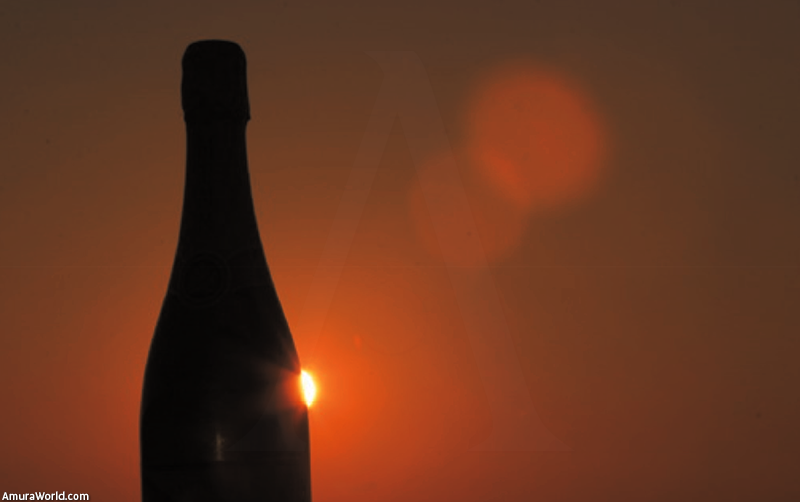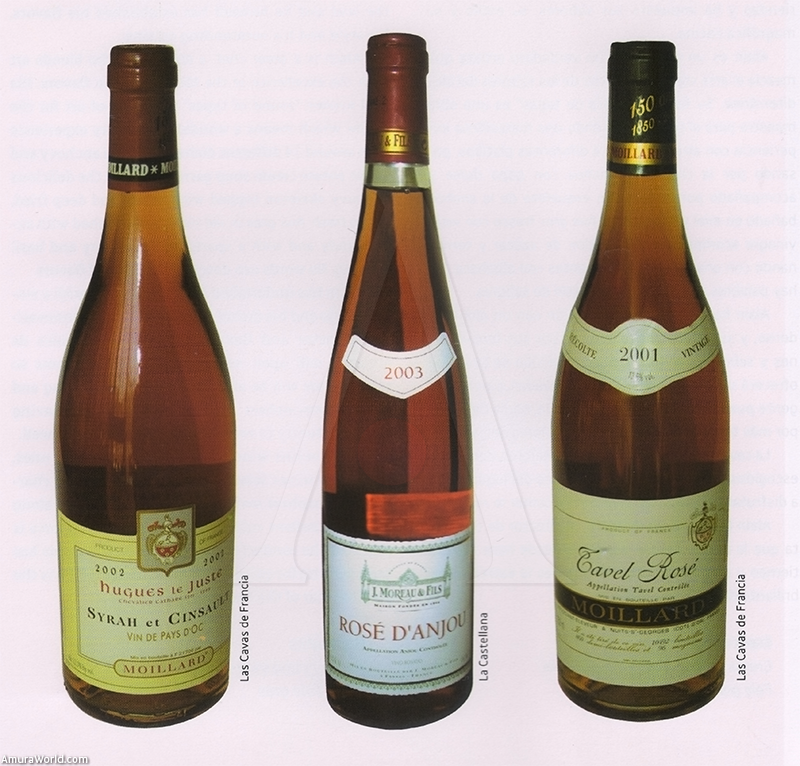Appellation of Rosé wines
Still rosé wines
These are obtained through a so called “bleeding” process. That is to say, the red grape is pressed and the skin left for some hours in contact with the must until the desired rosé color is obtained.
Sparkling rosé wines
On the contrary to still wines, these are obtained by means of what is known as “color matching”. That is, a red wine is added to the white wine base in order to get the pink color following thereafter, the manufacturing process. This is the case of rosé champagne.
In France, the most outstanding rosé wines are produced in the regions of the Loire Valley, South Rhone and Côtes de Provence.
Loire Valley
This region is home of one of the most famous rosé wines in the world: Rosé d´Anjou. This wine is produced in the central part of the valley in Anjou. It is a bright salmon pink colored wine and produced mainly from Gamay and Grolleau grapes. Its fruit-like character reminds of ripe fruits. Smooth in texture and with an appropriate acidity, the wine is palatable pleasant.
To go with: It can be taken as an aperitif or it goes well with light cheeses, chicken or white fish and seafood cooked in light sauces.
Service temperature: 12 to 14°C.
South Rhone
This region features two of the most important rosé wines of France and maybe of the world: Tavel and Lirac. Both wines are named after the two towns where these are produced, and the latter are located up north of Avignon. Tavel and Lirac are wines with appellation contrôleé produced from Garnacha and Mourvedre grapes. Both are strong and rich in alcohol content. Their intense pink color along with their bluish hues is the result of these two grape varieties. These are wines with an intense aroma, recalling ripe fruits with highlights of plums and red currant. Palate speaking, they rely on a good acidity level, body and medium after taste.
To go with: Poultry, pork, fish and seafood cooked in sauces of intermediate intensity.
Service temperature: 14 to 16 °C.
Côtes de Provence
Rosé wines from this region are produced from Garnacha and Cinsault grapes. They are dry, light and fresh wines. Their color varies from a pale to a strong pink hue. In the nose these wines remind us of red berries such as raspberries and cassis as well as citrus with an emphasis in pink grapefruit. All these aromas enhanced by an elegant fragrance of roses. Dry wines of a medium range acidity, light, fresh with a short end taste, but well balanced.
|
• Rosé d’Anjou • Tavel Rosé • Lirac • Syrah Rosé |
Text: Sommelier Georgina Estrada Gil ± Photo: La Catellana, Las Cavas de Francia, Archivo


